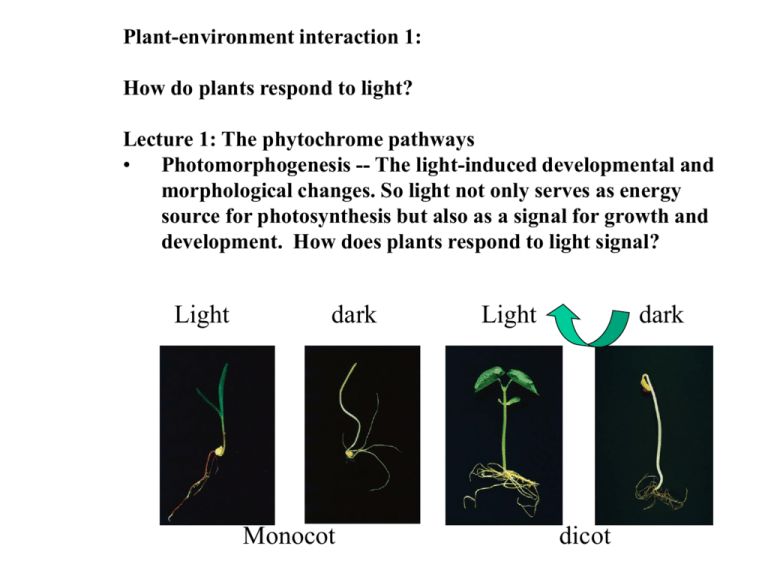Since the dawn of time, light has been the celestial conductor orchestrating the symphony of life on Earth. Its ethereal embrace nourishes the verdant tapestry of plants, guiding their dance toward the heavens, while it simultaneously shapes the sensory worlds of animals, illuminating their intricate behaviors. This article delves into the profound effects of light on plant and animal species, unraveling the intricate tapestry woven by this fundamental force.

Image: www.ieltsreading.info
Light and Plant Life: A Symphony of Photosynthesis
For plants, light is not merely an ethereal illumination; it is the lifeblood that fuels their very existence. Through the miraculous process of photosynthesis, plants harness the energy of light to synthesize the glucose that nourishes their tissues. Chlorophyll, the green pigment that paints leaves their vibrant hue, acts as the maestro of this intricate dance, capturing photons of light and utilizing their energy to power the chemical reactions that transform carbon dioxide and water into life-sustaining glucose.
The intensity and duration of light exposure play significant roles in shaping the growth and development of plants. High-intensity light, such as that found in tropical regions, promotes rapid growth and lush foliage, while low-intensity light, more common in polar areas, can stunt growth and limit biomass accumulation. Additionally, the duration of light exposure, known as photoperiod, profoundly influences flowering and fruiting in many plant species.
Photoperiodism: The Rhythm of Life Guided by Light
For many plant species, the length of the day and night, or photoperiod, is a crucial cue that triggers physiological responses such as flowering and seed germination. Some plants, such as long-day plants, are attuned to the long days of summer and will only flower when exposed to extended periods of light. Others, known as short-day plants, bloom in response to the shorter days of autumn and winter. This remarkable ability allows plants to synchronize their reproductive cycles with the changing seasons, maximizing their chances of survival and successful seed production.
Morphological Adaptations: A Canvas Painted by Light
In the realm of plants, light also serves as a master sculptor, shaping their morphology to optimize photosynthesis. Plants in low-light environments exhibit larger leaves with expanded surface areas to capture more sunlight, while those in high-light environments often have smaller leaves to reduce the risk of photodamage. Additionally, some plants display heliotropic movements, actively orienting their leaves toward the sun to maximize light absorption.

Image: studylib.net
The Effect Of Light On Plant And Animal Species
Light and Animal Life: Illuminating the Sensory Tapestry
The influence of light extends beyond the plant kingdom, deeply impacting the sensory worlds of animals. It shapes their visual perception, enabling them to navigate their surroundings, detect predators, and communicate with conspecifics. Many animals, such as insects and reptiles, utilize specialized photoreceptors in their eyes to detect light and perceive visual images.
Evolution of Color Vision: A kaleidoscope of Perception
In the fascinating realm of animal evolution, the development of color vision has been largely driven by the need to adapt to specific ecological niches. Predators, for instance, have evolved superior color vision to better detect their prey, while prey species have developed camouflage strategies to evade detection under various light conditions.
Circadian Rhythms: The Symphony of Time Guided by Light
Like plants, many animals possess internal clocks that synchronize their physiological and behavioral rhythms with the daily light-dark cycle. Known as circadian rhythms, these cycles regulate a wide range of activities, including sleep-wake cycles, hormone secretion, metabolism, and reproductive functions. In humans, for instance, disruption of circadian rhythms due to factors such as artificial light at night has been linked to various health issues, highlighting the profound influence of light on our physiological well-being.
From the mesmerizing dance of photosynthesis to the intricate sensory worlds of animals, light plays a fundamental role in the symphony of life. Its transformative power guides the growth and development of plants, while simultaneously shaping the sensory tapestry of animals, illuminating their unique adaptations and behaviors. Understanding the effects of light on plant and animal species is not only intellectually fascinating but holds practical implications for conservation efforts and the sustainability of Earth’s delicate ecosystems. As we delve deeper into the mysteries of light and its influence on life, we unlock the keys to preserving the intricate tapestry of biodiversity that graces our planet.